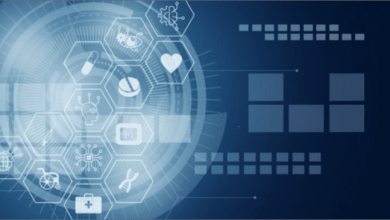
For years, software development has followed a familiar rhythm: define features, design wireframes, write code, test and release. Methodologies like Agile and DevOps have fine-tuned how teams manage this workflow, but they haven’t fundamentally changed the nature of the work itself.
That is starting to change. AI is no longer just an add-on tool for developers. It is reshaping the Software Development Life Cycle (SDLC) in ways that touch every phase of the process. From how we discover features to how code is written and tested, AI is introducing a new model of building software.
At companies like Microsoft and Google, AI is already contributing to more than 20 percent of new code. What seemed futuristic five years ago is quickly becoming the standard in many development teams.
1. Feature Discovery Will Move from Guesswork to Data-Driven Insights
Product managers have traditionally relied on interviews, feedback sessions and competitor research to decide what features to build. These methods are valuable, but they are often slow and subjective. Al is changing this by turning raw user behavior data into clear insights.
Rather than waiting for feedback cycles, Al models can now analyze clickstreams, heatmaps and session flows to highlight where users struggle and where opportunities for new features exist. This moves product discovery from a quarterly planning exercise to a continuous, data-driven process.
Teams that embrace this shift will be able to prioritize features based on actual usage patterns rather than assumptions.
2. UX Teams Will Build Functional Prototypes, Not Just Wireframes
The traditional workflow of designers creating wireframes that developers then translate into code is becoming outdated. Al-powered tools now allow designers to create interactive prototypes that generate working code.
This change reduces hand-offs and accelerates feedback loops. Designers can make adjustments and instantly see how their changes look and function in a live environment. Developers can then focus on refining logic and integrations instead of spending time recreating UI components from scratch.
The result is faster iterations and a more collaborative approach between design and development.
3. Product Managers Will Become Product Technologists
As Al bridges the gap between design and development, product managers are finding themselves closer to the technical side of the process. They are not becoming full-stack engineers, but they are taking a more hands-on role in shaping how features are built.
With Al tools, product managers can tweak user flows, adjust micro-interactions and even prototype basic logic without writing full code. This shift allows them to test ideas rapidly and communicate more effectively with engineering teams.
The product manager’s role is evolving from writing user stories and handing them off to teams, to actively crafting product experiences in real-time.
4. Engineers Will Focus More on Code Review and Architecture
Al is not replacing developers, but it is changing how they spend their time. Instead of writing repetitive boilerplate code, engineers are focusing more on reviewing Al-generated code, ensuring it meets business needs, security standards and long-term maintainability.
Engineers are becoming curators and architects, guiding Al to generate high-quality code while focusing their own efforts on complex problem-solving and system design.
This shift allows development teams to build faster without compromising on quality or scalability.
5. QA and Operations Will Become Continuous Feedback Systems
Quality assurance and operations have often been treated as end-of-pipeline activities. Al is turning these into continuous, autonomous processes that are integrated into every phase of development.
Al-driven testing pipelines can automatically generate and run test cases based on code changes and user scenarios. In production, Al systems monitor application performance, predict failures, and can even roll back problematic deployments without human intervention.
While these systems automate many tasks, human oversight remains crucial. Engineers and QA teams will need to interpret Al outputs, assess their impact and make informed decisions.
Challenges That Must Be Addressed
While the potential of Al-driven SDLC is enormous, there are important challenges to navigate.
Security Risks: Research indicates that a significant portion of Al-generated code contains vulnerabilities. This makes thorough code reviews and security audits more important than ever.
Maintainability Concerns: Al can produce functional code that is difficult to maintain if not properly guided. Teams need to ensure that generated code is clean, modular and aligned with best practices.
Tooling Landscape Is Rapidly Evolving: The Al tooling ecosystem is growing fast. New platforms are emerging that challenge existing tools. Teams must remain agile and continuously evaluate which tools best fit their workflows.
SDLC 2.0: A Continuous, Data-Driven Loop
The new SDLC model is no longer a linear process. It is a living loop where every phase feeds into the next:
- Al-driven feature discovery using real-time user data.
- Product managers and designers co-building functional prototypes.
- Al-assisted code generation with developers reviewing and refining.
- Continuous QA and operational monitoring through Al feedback loops.
- User data flowing back into the discovery phase, starting the loop again.
This model allows teams to deliver faster, adapt more quickly to user needs and focus human effort on creativity and problem-solving.
The Future is Human-Al Collaboration
There is a common fear that Al will replace developers, designers and product managers. The reality is that Al will amplify these roles, not eliminate them.
Developers will spend more time solving complex problems and architecting systems.
Product managers will become more hands-on with product creation. Designers will iterate directly in code-ready environments.
However, this transformation requires teams to build new skills. Critical thinking, security awareness, and the ability to guide Al effectively will be just as important as technical expertise.
SDLC 2.0 is not just a process improvement. It represents a new way of thinking about software development. Teams that embrace this shift thoughtfully will find themselves building better products, faster, while maintaining the human creativity and judgment that Al cannot replicate.

